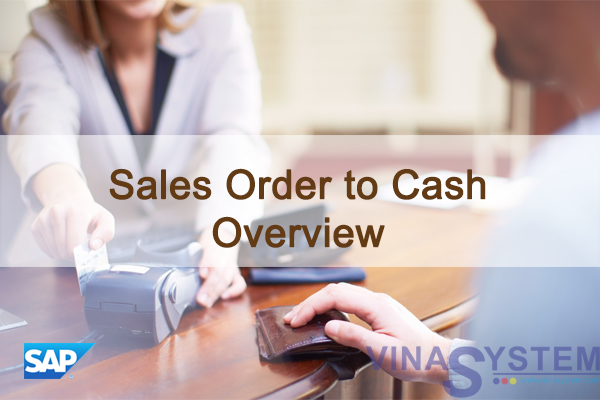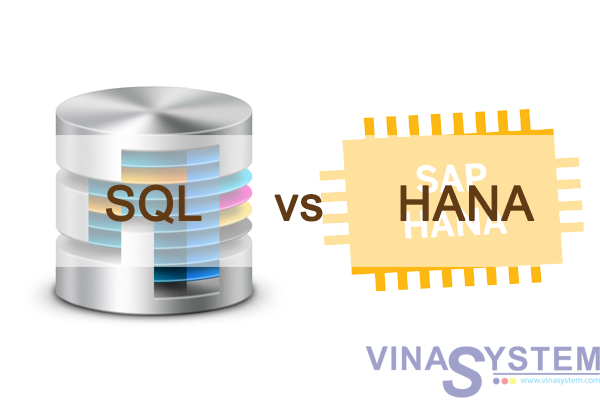
Sales Order to Cash in SAP Business One - Sales Order to Cash Overview
Welcome to the topic on sales order to cash, we perform the steps in the sales process from sales order to cash. As we create each document, we describe the effect of each step on inventory and accounting.
I/ Business Scenario
Your company has set customer satisfaction as the top priority and wants to use efficient processes in sales to ensure that customer demands can be met as quickly as possible.
We will review the sales process from order to cash with an eye on understanding the impact of each step to see how we might improve the process
II/ Sales Order

The sales order is an important document - it tells everyone to get busy filling that order. As such, this document is important for planning production, creating purchase orders, and scheduling resources.
- One unique feature of SAP Business One is that you can create purchase orders directly from sales orders, thereby streamlining your supply chain as well as material requirements planning processes.
- You can change a sales order (changing quantities, updating prices or discounts, and so on) after you have posted it. This is possible as long as you have made the appropriate setting in Document Settings and the sales order is still open.
- A sales order can be based on one or more sales quotations.
In SAP Business One, a sales order affects the available stock level. This means that the stock available to sell is reduced by the quantity in the order. When you enter sales orders, no inventory transactions or value-based changes are posted to the general ledger, but the items are added to the committed quantity in the inventory module.

Let us imagine that our customer orders 5 printers.
We enter customer, items, and quantities in the sales order
The system determines the price automatically, based on the customer’s assigned price list.
The sales person offers a discount to the customer, so a manual discount for 1% is entered in the sales order
Based on the payment terms, the customer is also eligible for an early payment discount of 2%
III/ Delivery

A delivery records that goods have been shipped. This document is also sometimes referred to as a packing slip or delivery note.
You can create a delivery from a sales order or sales quotation. To do so, simply display the sales order or quotation and select Delivery from the Copy To button’s drop-down list.
If you have multiple sales orders to be delivered to one customer, you can open a blank delivery, add the customer name, then use Copy from to select from a list of sales orders and quotations for that customer.

Adding a delivery reduces the actual inventory levels. When you post a delivery, the corresponding goods issue is also posted. The goods leave the warehouse, inventory quantities are reduced, and, if you are running perpetual inventory, the relevant inventory changes are posted to accounting. If the delivery is based on a sales order, the committed quantity from that order will also be reduced.

In our business example, our customer has ordered 5 printers.
When it is time, we ship 5 printers to the customer.
The quantity of 5 printers is removed from inventory.
The inventory account is credited for item cost.
The cost of goods sold account is debited.
*** Deliveries and Accounting

If you are using perpetual inventory, the system creates a journal entry automatically.
The journal entry posts the value of the current item cost to the debit side of a cost account (such as cost of goods sold) and to the credit side of the stock account.
The stock account and the cost account are retrieved from the Stock Account field and the Cost Account field on the Inventory tab of the item master record.
The stock quantity is affected whether or not you are using perpetual inventory.
IV/ A/R Invoice

An A/R invoice is a request for payment. Posting an A/R invoice records the revenue in the profit and loss statement.
Once added, the A/R invoice automatically creates a journal entry posting to the corresponding customer and revenue accounts.

In our business example, we have delivered 5 printers to our customer.
Now we bill our customer for the printers.
The total amount was reduced by a 1% discount that the salesperson entered manually.
The due date is based on the customer’s payment terms. These payment terms also include a 2% discount for early payment.
When the A/R invoice is added, a journal entry is automatically created to record a credit to revenue and a debit to the customer account.
1/ Postings in Sales Process for Inventory Items

Here we see the journal entries made in a perpetual inventory system for inventory items.
We saw previously that the delivery creates a journal entry associated with the sale of goods and the reduction in inventory value.
The A/R invoice records the debt owed by the customer and the revenue made from the sale.
There may be additional postings for tax or additional revenues and expenses.
2/ Journal Entry Preview

Once a journal entry is made, it cannot be changed, only reversed.
Journal Entry Preview enables you to simulate journal entries before they actually happen in the database.
This can be useful if you are creating an A/R Invoice with special circumstances and you would like to check the journal entry before posting the invoice. It is also useful for training new employees or for testing settings during an implementation. This function is available for all documents that create journal entry postings.
You choose the Journal Entry Preview icon to instantly view what would happen when your are posting the document.
Simulation includes G/L-Accounts and the Cost Center distribution.
V/ Incoming Payment

§Incoming payments are the last step in the basic sales process, even though they are a function in banking. Posting an incoming payment receives the payment from the customer. Customer payments can be processed for bank transfers, checks, credit cards and cash, and in some localizations, bill of exchange.
§When the incoming payment is added, a journal entry is made crediting the customer account for the payment. Depending on the payment means, an appropriate G/L account (such as one of our bank accounts) is debited. If there is a early payment discount, a debit is applied to a discount account.
§When you create an incoming payment to clear (fully or partially) a document or transaction, internal reconciliation takes place automatically, meaning that the customer’s invoice and the payment are matched in the system.
§Additionally, the Payment Wizard can be used to process incoming payments as well as process outgoing payments. Payments can also be received automatically from a bank transfer using bank transfer processing in many localizations.

Let us consider the business example.
Our customer pays the invoice on time for the 5 printers
The total includes the 1% manual discount and the early payment discount of 2%. The early payment discount defaults in from the payment terms associated with the customer master record.
A journal entry is created to record:
- Debits to our house bank account, or a clearing account depending on the selected payment terms, and to cash discount accounts
- And a credit to the customer account
VI/ Summary
Here are some key points:
- Sales orders contain the basic information needed for placing the order, delivering the goods and invoicing the customer. A sales order has no effect on accounting.
- Sales orders can be changed after posting as long as appropriate settings are made and the order is still open.
- A delivery indicates that goods have been shipped and reduces inventory levels.
- If you are running perpetual inventory, posting a delivery debits current item cost and credits the inventory stock account.
- An A/R invoice is a request for payment. When an A/R invoice is posted, a journal entry posts a debit to the customer account and a credit to sales revenue and any tax accounts.
- You can preview journal entries before they are posted.
- Incoming payments are the last step in the basic sales process, even though they are a function in banking.






